-
 Bitcoin
Bitcoin $114400
0.68% -
 Ethereum
Ethereum $3550
2.48% -
 XRP
XRP $3.001
4.99% -
 Tether USDt
Tether USDt $0.9999
0.01% -
 BNB
BNB $757.6
1.46% -
 Solana
Solana $162.9
1.07% -
 USDC
USDC $0.9998
0.00% -
 TRON
TRON $0.3294
0.91% -
 Dogecoin
Dogecoin $0.2015
2.46% -
 Cardano
Cardano $0.7379
2.01% -
 Stellar
Stellar $0.4141
8.83% -
 Hyperliquid
Hyperliquid $37.83
-1.91% -
 Sui
Sui $3.454
0.76% -
 Chainlink
Chainlink $16.62
3.53% -
 Bitcoin Cash
Bitcoin Cash $554.6
2.84% -
 Hedera
Hedera $0.2486
3.91% -
 Ethena USDe
Ethena USDe $1.001
0.00% -
 Avalanche
Avalanche $21.95
3.34% -
 Toncoin
Toncoin $3.563
-2.85% -
 Litecoin
Litecoin $112.7
2.65% -
 UNUS SED LEO
UNUS SED LEO $8.977
0.13% -
 Shiba Inu
Shiba Inu $0.00001232
1.85% -
 Uniswap
Uniswap $9.319
2.93% -
 Polkadot
Polkadot $3.632
1.38% -
 Monero
Monero $307.2
2.36% -
 Dai
Dai $0.9997
-0.03% -
 Bitget Token
Bitget Token $4.340
0.91% -
 Pepe
Pepe $0.00001048
1.07% -
 Cronos
Cronos $0.1348
3.26% -
 Aave
Aave $261.5
1.93%
What is the block reward for LTC mining? Will it be halved in the future?
Litecoin, created in 2011, uses Scrypt for mining; its block reward halves every 840,000 blocks, next in August 2023 to 6.25 LTC, impacting mining profitability.
May 02, 2025 at 01:01 pm
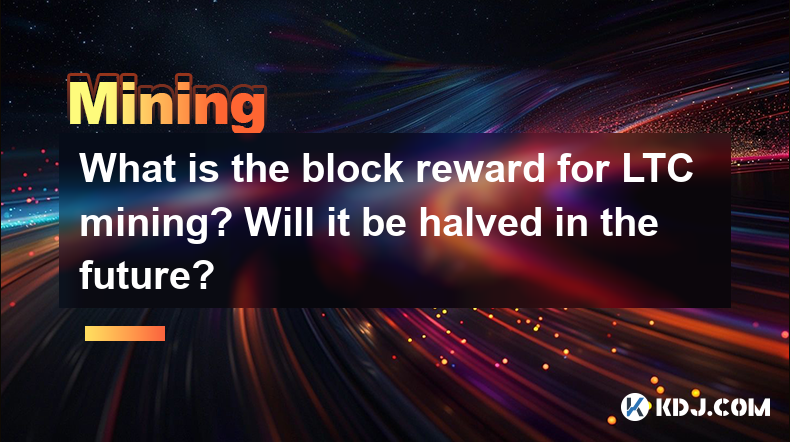
Introduction to Litecoin (LTC)
Litecoin, often referred to as the silver to Bitcoin's gold, is a peer-to-peer cryptocurrency that was created in 2011 by Charlie Lee. It is based on an open-source global payment network that is not controlled by any central authority. Litecoin uses the Scrypt algorithm for its proof-of-work consensus mechanism, which is different from Bitcoin's SHA-256 algorithm. This difference in algorithms has implications for mining, which we will explore in detail.
What is the Block Reward for LTC Mining?
The block reward in Litecoin mining refers to the amount of Litecoin that miners receive for successfully adding a new block to the Litecoin blockchain. As of the last halving event, the current block reward for Litecoin mining is 12.5 LTC per block. This reward is given to the miner who solves the cryptographic puzzle required to validate transactions and add them to the blockchain.
The Mechanism of Litecoin Block Reward Halving
Litecoin, like Bitcoin, undergoes a process known as halving, where the block reward is reduced by half at regular intervals. The halving event in Litecoin occurs approximately every four years or every 840,000 blocks. This mechanism is designed to control the supply of Litecoin and mimic the scarcity of precious metals like gold and silver.
Historical Context of Litecoin Halvings
To understand the current block reward, it's important to look at the history of Litecoin halvings. The first halving occurred on August 25, 2015, when the block reward was reduced from 50 LTC to 25 LTC. The second halving took place on August 5, 2019, reducing the reward to 12.5 LTC. These events have had significant impacts on the Litecoin market and mining ecosystem.
Will the Litecoin Block Reward Be Halved in the Future?
Yes, the Litecoin block reward will be halved in the future. The next halving event is expected to occur around August 2023, when the block reward will be reduced to 6.25 LTC. This event will follow the same pattern as previous halvings, occurring every 840,000 blocks. The halving mechanism is hardcoded into the Litecoin protocol, ensuring that it will continue to happen until all 84 million Litecoins have been mined.
Impact of Halving on Litecoin Mining
The halving of the block reward has several implications for Litecoin mining. Firstly, it reduces the immediate revenue for miners, which can affect the profitability of mining operations. Miners may need to upgrade their equipment or find more efficient ways to mine to remain profitable. Secondly, the reduced supply of new Litecoins entering the market can lead to increased demand and potentially higher prices, which could offset the reduced block reward.
How to Prepare for Litecoin Halving
For miners and investors, preparing for a Litecoin halving involves several steps:
- Monitor the Litecoin blockchain: Keep an eye on the block height to know when the next halving is approaching.
- Assess mining profitability: Use mining calculators to determine if your current setup will remain profitable after the halving.
- Upgrade mining equipment: Consider investing in more efficient mining hardware to maintain or increase your mining output.
- Diversify your portfolio: Consider holding other cryptocurrencies or assets to mitigate the risk associated with the halving.
The Role of Scrypt in Litecoin Mining
The Scrypt algorithm used by Litecoin is designed to be more memory-intensive than Bitcoin's SHA-256, making it less susceptible to ASIC (Application-Specific Integrated Circuit) mining. This was intended to make Litecoin mining more accessible to individuals using consumer-grade hardware. However, over time, ASICs designed for Scrypt have emerged, affecting the mining landscape.
Mining Litecoin: A Step-by-Step Guide
If you're interested in mining Litecoin, here's a detailed guide on how to get started:
- Choose your mining hardware: Decide whether to use a GPU, FPGA, or ASIC miner. For Litecoin, ASIC miners are the most efficient.
- Set up your mining software: Download and install mining software compatible with your hardware, such as CGMiner or EasyMiner.
- Join a mining pool: Mining Litecoin solo can be challenging due to the difficulty level. Joining a mining pool increases your chances of earning rewards.
- Configure your mining software: Enter the pool's URL, your username, and any other required settings into the mining software.
- Start mining: Once everything is set up, start the mining software and let it run. Monitor your mining performance and adjust as needed.
Frequently Asked Questions
Q: How does the Litecoin halving affect the overall supply of Litecoin?
A: The Litecoin halving reduces the rate at which new Litecoins are created, which slows down the overall supply growth. This mechanism is designed to create scarcity and potentially increase the value of existing Litecoins.
Q: Can Litecoin mining be profitable after the halving?
A: Profitability after a halving depends on several factors, including the price of Litecoin, mining difficulty, and the efficiency of your mining equipment. Miners may need to adjust their strategies to remain profitable.
Q: What is the total supply of Litecoin, and how does the halving affect it?
A: The total supply of Litecoin is capped at 84 million coins. The halving events ensure that the rate of new Litecoin creation decreases over time, aligning with the total supply cap.
Q: How does the Scrypt algorithm impact Litecoin mining compared to Bitcoin's SHA-256?
A: The Scrypt algorithm is more memory-intensive than SHA-256, which was intended to make Litecoin mining more accessible to individuals using consumer-grade hardware. However, the development of Scrypt ASICs has changed the mining landscape, making it more similar to Bitcoin mining in terms of hardware requirements.
Disclaimer:info@kdj.com
The information provided is not trading advice. kdj.com does not assume any responsibility for any investments made based on the information provided in this article. Cryptocurrencies are highly volatile and it is highly recommended that you invest with caution after thorough research!
If you believe that the content used on this website infringes your copyright, please contact us immediately (info@kdj.com) and we will delete it promptly.
- Cryptocurrency, Altcoins, and Profit Potential: Navigating the Wild West
- 2025-08-04 14:50:11
- Blue Gold & Crypto: Investing Disruption in Precious Metals
- 2025-08-04 14:30:11
- Japan, Metaplanet, and Bitcoin Acquisition: A New Era of Corporate Treasury?
- 2025-08-04 14:30:11
- Coinbase's Buy Rating & Bitcoin's Bold Future: A Canaccord Genuity Perspective
- 2025-08-04 14:50:11
- Coinbase's Buy Rating Maintained by Rosenblatt Securities: A Deep Dive
- 2025-08-04 14:55:11
- Cryptos, Strategic Choices, High Returns: Navigating the Meme Coin Mania
- 2025-08-04 14:55:11
Related knowledge
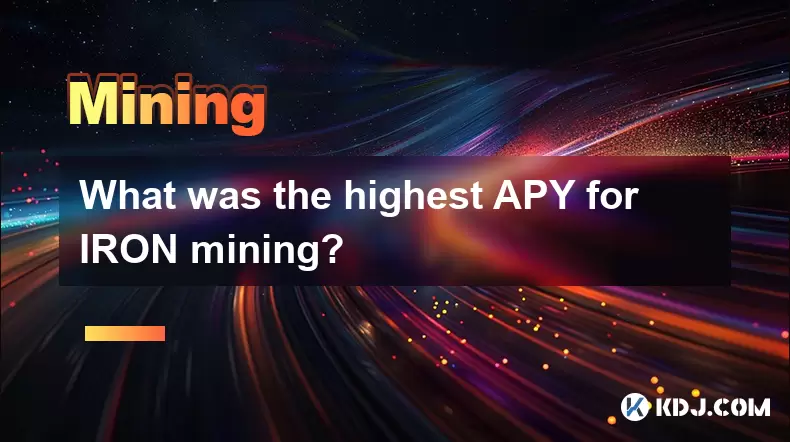
What was the highest APY for IRON mining?
Jul 23,2025 at 05:14am
Understanding IRON Token and Its Mining MechanismThe IRON token is a stablecoin that operates within the Iron Finance ecosystem, primarily on blockcha...

What is impermanent loss in IRON pools?
Jul 23,2025 at 09:00am
Understanding Impermanent Loss in the Context of IRON PoolsImpermanent loss is a phenomenon that affects liquidity providers in decentralized finance ...
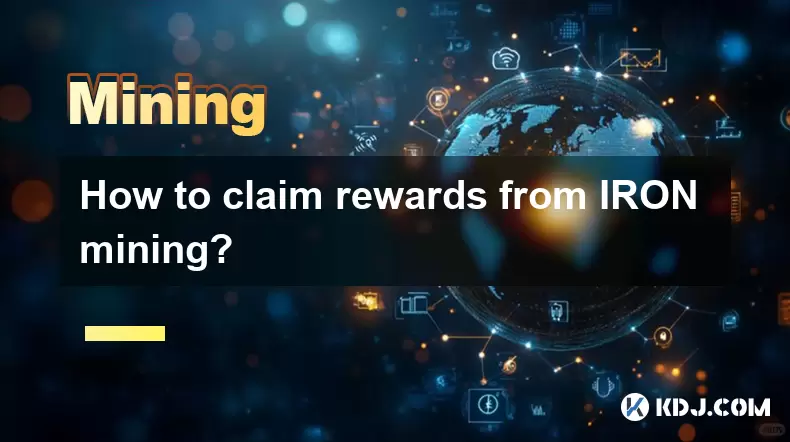
How to claim rewards from IRON mining?
Jul 23,2025 at 02:21pm
Understanding IRON Mining and Reward MechanismsIRON Finance operated as a decentralized finance (DeFi) protocol on the Polygon and Binance Smart Chain...
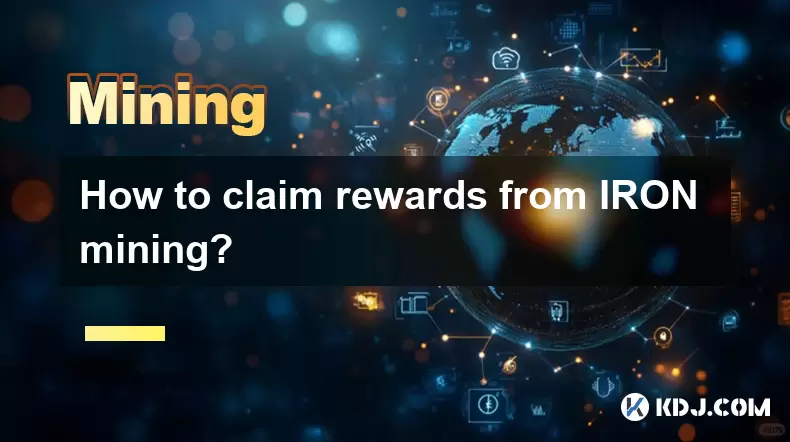
How to claim rewards from IRON mining?
Jul 29,2025 at 05:07am
Understanding IRON Mining and Reward MechanismIRON is a dual-token system designed to stabilize the value of a synthetic asset through a combination o...
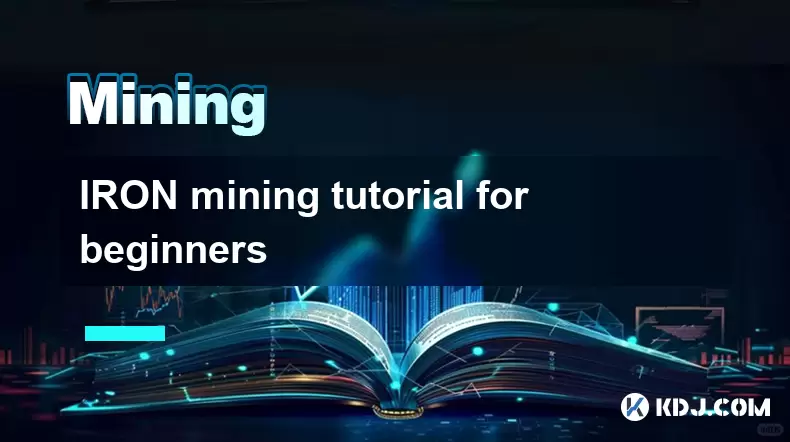
IRON mining tutorial for beginners
Jul 27,2025 at 12:01am
What Is IRON and How Does It Work in the Cryptocurrency Ecosystem?IRON is a cryptocurrency token that operates on the Binance Smart Chain (BSC) and is...
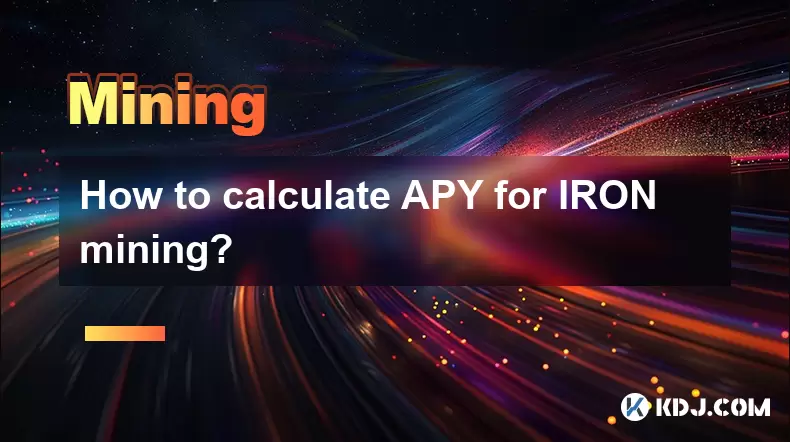
How to calculate APY for IRON mining?
Jul 28,2025 at 09:49am
Understanding APY in the Context of IRON Token MiningWhen engaging in IRON token mining within decentralized finance (DeFi) platforms, Annual Percenta...

What was the highest APY for IRON mining?
Jul 23,2025 at 05:14am
Understanding IRON Token and Its Mining MechanismThe IRON token is a stablecoin that operates within the Iron Finance ecosystem, primarily on blockcha...

What is impermanent loss in IRON pools?
Jul 23,2025 at 09:00am
Understanding Impermanent Loss in the Context of IRON PoolsImpermanent loss is a phenomenon that affects liquidity providers in decentralized finance ...

How to claim rewards from IRON mining?
Jul 23,2025 at 02:21pm
Understanding IRON Mining and Reward MechanismsIRON Finance operated as a decentralized finance (DeFi) protocol on the Polygon and Binance Smart Chain...

How to claim rewards from IRON mining?
Jul 29,2025 at 05:07am
Understanding IRON Mining and Reward MechanismIRON is a dual-token system designed to stabilize the value of a synthetic asset through a combination o...

IRON mining tutorial for beginners
Jul 27,2025 at 12:01am
What Is IRON and How Does It Work in the Cryptocurrency Ecosystem?IRON is a cryptocurrency token that operates on the Binance Smart Chain (BSC) and is...

How to calculate APY for IRON mining?
Jul 28,2025 at 09:49am
Understanding APY in the Context of IRON Token MiningWhen engaging in IRON token mining within decentralized finance (DeFi) platforms, Annual Percenta...
See all articles

























































































